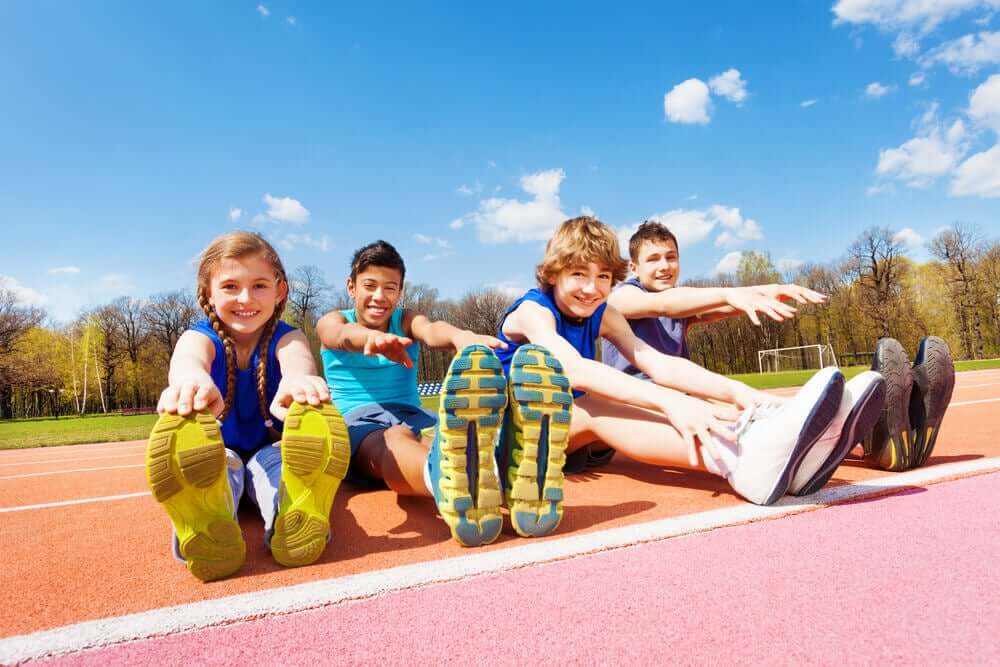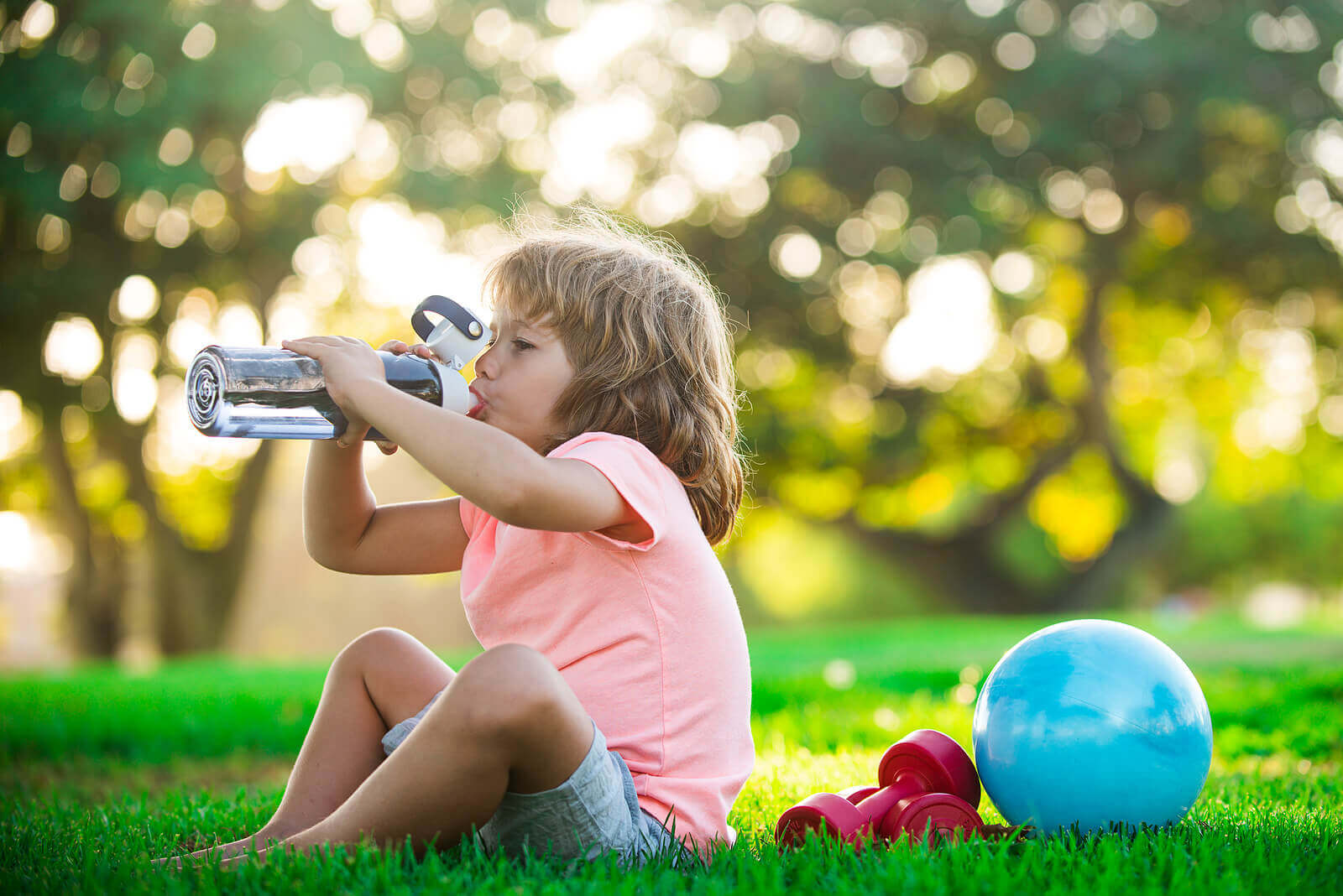3 Warm-Up Games for Children


Written and verified by the professional writer and specialist in physical education Eva Maria Rodriguez Diego
Warming up is a very important stage that shouldn’t be missed before doing exercise. In the following article, we’ll see some warm-up games for children that will be very useful before doing exercise, sports or any physical activity.
It’s true that that warming up isn’t really as important for children as it is for adults. After all, children tend to be active by nature. In fact, as soon as they arrive on the basketball court or soccer field, they start playing and moving around.
So why do children need to warm up before exercising? And why should we warm up with games?

Keys to warming up in children’s sports
There are many reasons why children should warm up before doing exercise or sports, but they’re not the same reasons that we adults have. The most important reasons why children should warm up before doing exercise or sports are the following:
- Getting into the habit of warming up before training. One of the objectives of warming up for children is to get into the habit for adult life. If they accept from the beginning that warming up is basic before doing any physical activity, then they’ll carry the idea with them for the rest of their lives.
- Calming down in order to give their all in the training. It seems ironic, but it’s true. Warming up helps children calm down and start to focus on what they’re doing. Kids are usually quite anxious at training because they’re eager, not only to be with other kids, but also because they need to get moving. Warming up helps them to curb these impulses.
- Moving the body in a controlled way. Warming up beforehand helps children to make more controlled and specific movements in preparation for training. This is great, for example, to work on their range of motion or dynamic stretching.
Why warm-up games?
Warm-up games are a much more interesting option for children than a standard adult warm-up. This is for the following reasons:
- Children don’t drastically break their natural activity by playing games. This makes it easier to introduce them to the training and get them involved.
- Warm-up games allow them to work on general and specific skills. Playing can train general skills, including skills that aren’t used for a certain sport. It also helps to work on other skills required in basic training.
- Warming up is more fun when you’re playing. In this way, it improves children’s behavior and commitment to the sport.
- Games help to establish rules and encourage teamwork. Through games, children learn to respect rules and also to value teamwork.
- Games stimulate creativity. By playing, we help children to go beyond the sport itself, stimulating creative thinking.
Warm-up games for children
There are many possibilities when it comes to warm-up games for children. The important thing is that they involve continuous movement and include general mobilization of the body. Some ideas for warm-up games before exercise or sport include the following:
Donkey tails
For this game you need a strip of cloth, or something similar, of about 4-6 inches for each child. Each child will put their strip of cloth on the waistband of their trousers like a donkey’s tail. The aim is to catch each other’s tails and, in turn, prevent others from stealing theirs.
After a while, the monitor will signal the end of the game. The winner is the one who has collected the most donkey tails. It’s not really a competitive game, but it’s always an incentive for the children to get a round of applause for having done a good job.
Variations of the game are also possible. For example, crawling on the ground, moving like crabs, walking or running backwards, using only one hand (perfect for working the non-dominant hand), etc.
Traffic light race
The traffic light race consists of moving around the playing area at a certain speed, according to the traffic light’s indications. You need to have a good distance to cover during the race.
The game can be played using signs with the traffic light colors or voice instructions. In any case, three colors should be used: green for moving fast, yellow for moving slowly and red for stopping.

This is a speed game to test reactions and to work on the child’s attention. The child who makes a mistake will have to go back to the start again. The game ends when someone reaches the finish line. You can start over again and turn the finish line into the starting line.
As in the previous case, variations in the movement can be incorporated: on one leg, backwards, crawling, crab crawling, etc.
Puppet in the mirror
The puppet in the mirror game can be used at the end of the warm-up to capture the children’s attention, get them to stop for a while and, in turn, to do some dynamic stretching and balance exercises. It’s also great for working on body expression and creativity.
With this in mind, the instructor (or one of the children) will be the puppet and the others the mirror. The puppet will make slow movements that the mirror (the group) will have to imitate.
A little imagination is needed so that the younger children don’t get bored. You can play around with facial gestures and get into funny shapes. You can also play this game in small groups or pairs.
In short, games are a natural form of physical activity for children. Using warm-up games is a perfect way to get children to do what we want and to give them the opportunity to have fun.
This is especially important for children who have problems integrating into the group and for those who don’t have a natural positive predisposition for physical exercise.
Warming up is a very important stage that shouldn’t be missed before doing exercise. In the following article, we’ll see some warm-up games for children that will be very useful before doing exercise, sports or any physical activity.
It’s true that that warming up isn’t really as important for children as it is for adults. After all, children tend to be active by nature. In fact, as soon as they arrive on the basketball court or soccer field, they start playing and moving around.
So why do children need to warm up before exercising? And why should we warm up with games?

Keys to warming up in children’s sports
There are many reasons why children should warm up before doing exercise or sports, but they’re not the same reasons that we adults have. The most important reasons why children should warm up before doing exercise or sports are the following:
- Getting into the habit of warming up before training. One of the objectives of warming up for children is to get into the habit for adult life. If they accept from the beginning that warming up is basic before doing any physical activity, then they’ll carry the idea with them for the rest of their lives.
- Calming down in order to give their all in the training. It seems ironic, but it’s true. Warming up helps children calm down and start to focus on what they’re doing. Kids are usually quite anxious at training because they’re eager, not only to be with other kids, but also because they need to get moving. Warming up helps them to curb these impulses.
- Moving the body in a controlled way. Warming up beforehand helps children to make more controlled and specific movements in preparation for training. This is great, for example, to work on their range of motion or dynamic stretching.
Why warm-up games?
Warm-up games are a much more interesting option for children than a standard adult warm-up. This is for the following reasons:
- Children don’t drastically break their natural activity by playing games. This makes it easier to introduce them to the training and get them involved.
- Warm-up games allow them to work on general and specific skills. Playing can train general skills, including skills that aren’t used for a certain sport. It also helps to work on other skills required in basic training.
- Warming up is more fun when you’re playing. In this way, it improves children’s behavior and commitment to the sport.
- Games help to establish rules and encourage teamwork. Through games, children learn to respect rules and also to value teamwork.
- Games stimulate creativity. By playing, we help children to go beyond the sport itself, stimulating creative thinking.
Warm-up games for children
There are many possibilities when it comes to warm-up games for children. The important thing is that they involve continuous movement and include general mobilization of the body. Some ideas for warm-up games before exercise or sport include the following:
Donkey tails
For this game you need a strip of cloth, or something similar, of about 4-6 inches for each child. Each child will put their strip of cloth on the waistband of their trousers like a donkey’s tail. The aim is to catch each other’s tails and, in turn, prevent others from stealing theirs.
After a while, the monitor will signal the end of the game. The winner is the one who has collected the most donkey tails. It’s not really a competitive game, but it’s always an incentive for the children to get a round of applause for having done a good job.
Variations of the game are also possible. For example, crawling on the ground, moving like crabs, walking or running backwards, using only one hand (perfect for working the non-dominant hand), etc.
Traffic light race
The traffic light race consists of moving around the playing area at a certain speed, according to the traffic light’s indications. You need to have a good distance to cover during the race.
The game can be played using signs with the traffic light colors or voice instructions. In any case, three colors should be used: green for moving fast, yellow for moving slowly and red for stopping.

This is a speed game to test reactions and to work on the child’s attention. The child who makes a mistake will have to go back to the start again. The game ends when someone reaches the finish line. You can start over again and turn the finish line into the starting line.
As in the previous case, variations in the movement can be incorporated: on one leg, backwards, crawling, crab crawling, etc.
Puppet in the mirror
The puppet in the mirror game can be used at the end of the warm-up to capture the children’s attention, get them to stop for a while and, in turn, to do some dynamic stretching and balance exercises. It’s also great for working on body expression and creativity.
With this in mind, the instructor (or one of the children) will be the puppet and the others the mirror. The puppet will make slow movements that the mirror (the group) will have to imitate.
A little imagination is needed so that the younger children don’t get bored. You can play around with facial gestures and get into funny shapes. You can also play this game in small groups or pairs.
In short, games are a natural form of physical activity for children. Using warm-up games is a perfect way to get children to do what we want and to give them the opportunity to have fun.
This is especially important for children who have problems integrating into the group and for those who don’t have a natural positive predisposition for physical exercise.
All cited sources were thoroughly reviewed by our team to ensure their quality, reliability, currency, and validity. The bibliography of this article was considered reliable and of academic or scientific accuracy.
- Álvarez, C. S., & Martínez, A. V. (2019). Calentamiento para la actividad físico-deportiva. Sus fundamentos metodológicos dentro del proceso de enseñanza. Panorama Cuba y Salud, 14(S1), 3-5. https://www.medigraphic.com/cgi-bin/new/resumen.cgi?IDARTICULO=96292
- Castro, L. A. P. (1993). El calentamiento: estructura y contenido. Educación física y deporte, 15(1), 27-36. https://dialnet.unirioja.es/servlet/articulo?codigo=3643580
- Galera, A. D. (2018). Orientaciones didácticas sobre el calentamiento previo a la actividad física. Universidad de Barcelona. España. https://ddd.uab.cat/record/187663
- Hernández, C. O. (2010). Juegos para el calentamiento en Educación Física. EmásF: revista digital de educación física, (6), 62-75. https://dialnet.unirioja.es/servlet/articulo?codigo=3324149
- Jaime Soto, B. F., Bonilla Torres, S. L., & Velasquez Beltran, F. A. (2020). El juego como saber dentro de la educación física: una vivencia crítica de la realidad. Universidad Pedagógica Nacional, Bogotá, Colombia. http://upnblib.pedagogica.edu.co/handle/20.500.12209/12342
- Zaleta Morales, Lorena (2003). El juego desde el punto de vista de la educación física. Ciencias Médicas, Universidad Autónoma del Carmen, México. http://www.repositorio.unacar.mx/jspui/handle/1030620191/109
This text is provided for informational purposes only and does not replace consultation with a professional. If in doubt, consult your specialist.








